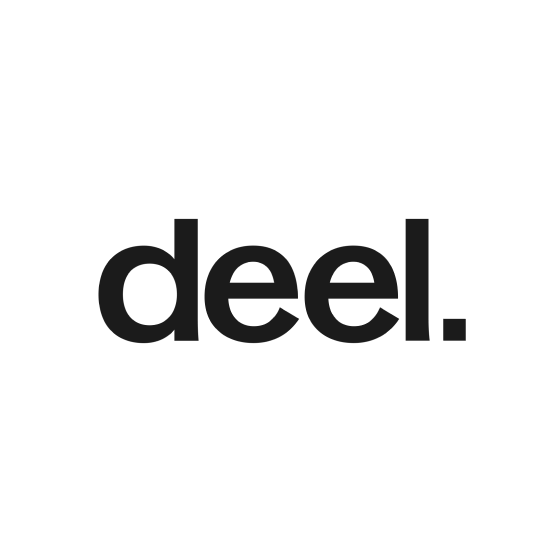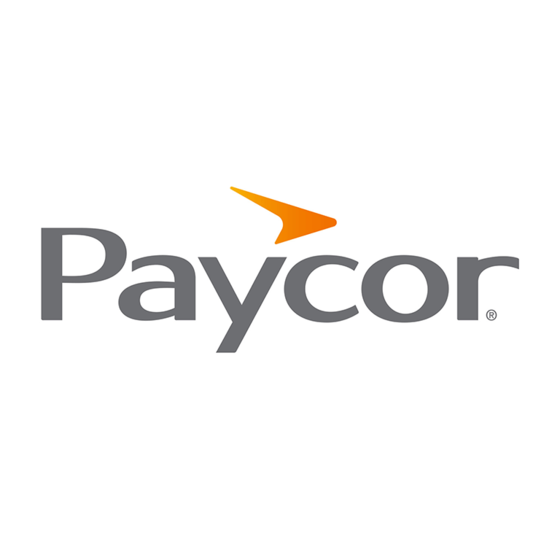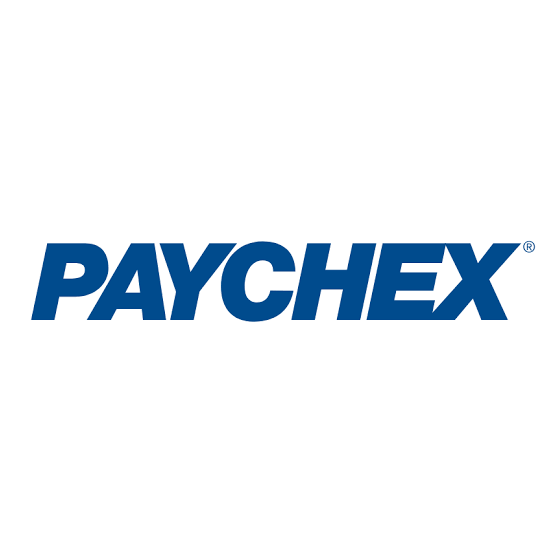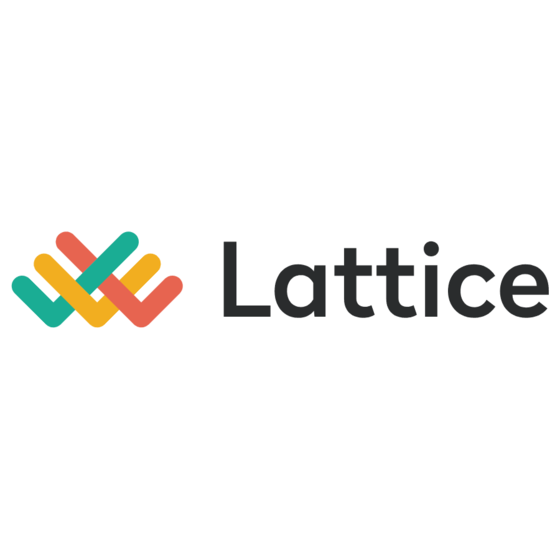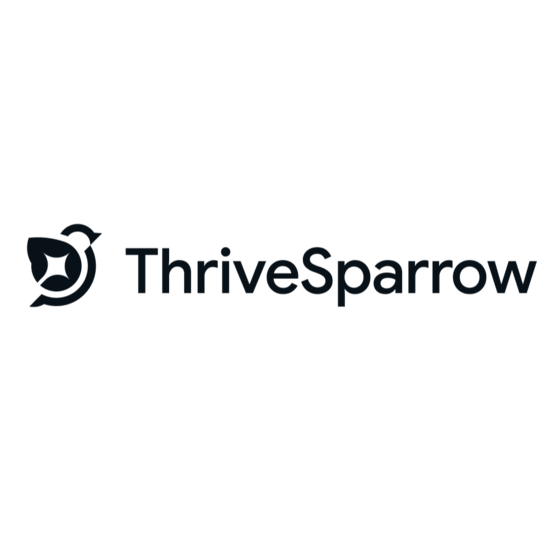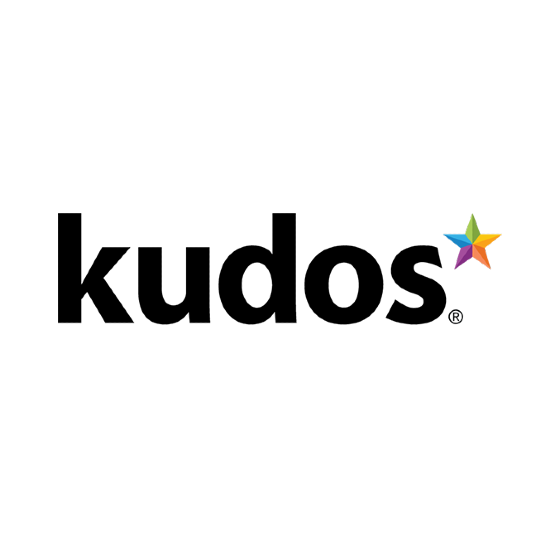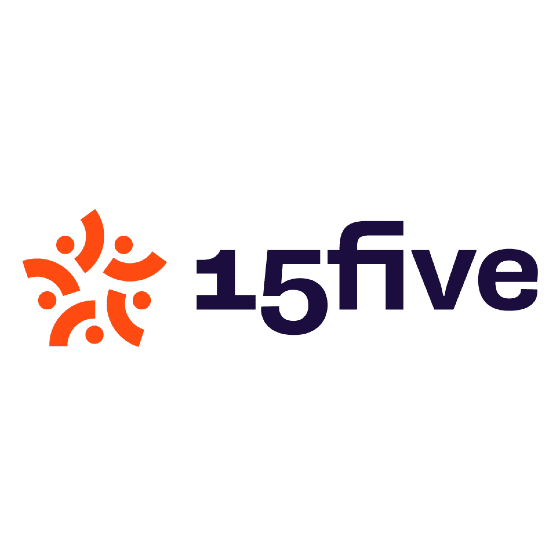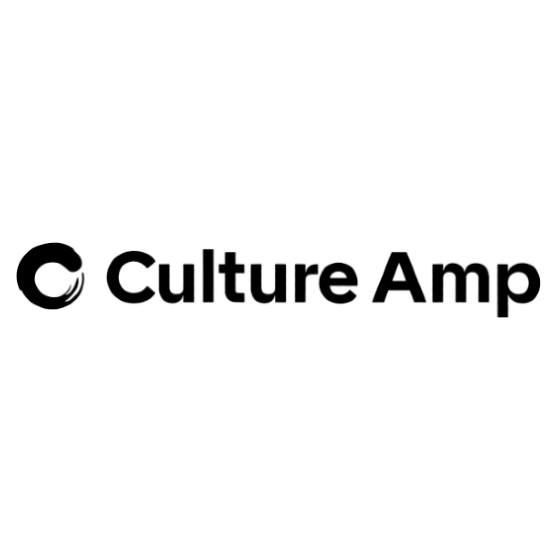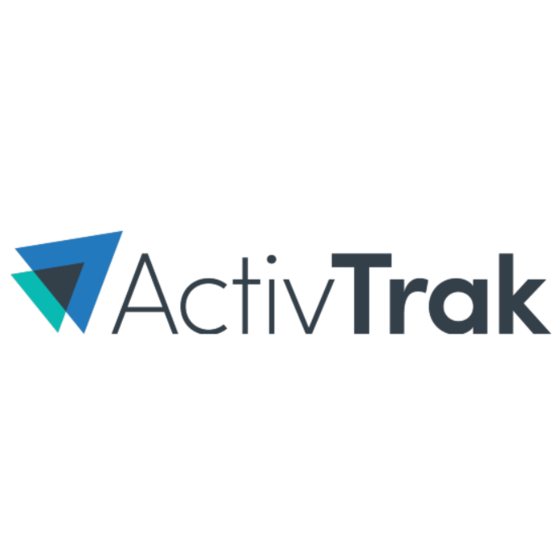10 Best Employee Engagement Software Shortlist
Here's my pick of the 10 best software from the 40 tools reviewed.
Get free help from our HR software advisors to find your match.
There are seemingly countless employee engagement software solutions available, so figuring out which is best for you is tough. You want to help create a positive work environment, encourage employee participation, and identify areas for improvement in the employee experience—but now need to figure out which tool is the best fit. Here, I make things simpler for you. I leverage my experience as an HR expert utilizing dozens of different employee engagement tools to bring you this shortlist of the best employee engagement software on the market.
Why Trust Our Software Reviews
We've been testing and reviewing HR software since 2019. As HR professionals ourselves, we know how critical and difficult it is to make the right decision when selecting software.
We invest in deep research to help our audience make better software purchasing decisions. We've tested more than 2,000 tools for different HR use cases and written over 1,000 comprehensive software reviews. Learn how we stay transparent, and take a look at our software review methodology.
Best Employee Engagement Software Comparison Chart
This comparison chart summarizes pricing details for my top employee engagement software selections to help you find the best option for your budget and business needs.
| Tools | Price | |
|---|---|---|
| Trakstar | Pricing upon request | Website |
| Lattice | From $11/user/month | Website |
| Bonusly | From $2.70/user/month | Website |
| Hub | Pricing upon request | Website |
| ThriveSparrow | From $3/employee/month | Website |
| Kudos | Pricing upon request | Website |
| 15Five | From $4/user/month (billed annually) | Website |
| Medallia | Pricing upon request | Website |
| Culture Amp | Pricing upon request | Website |
| ActivTrak | From $10/user/month | Website |

Compare Software Specs Side by Side
Use our comparison chart to review and evaluate software specs side-by-side.
Compare SoftwareHow to Choose Employee Engagement Software
Employee engagement software can help you form closer connections between your employees to improve teamwork, job satisfaction, and morale. To help you figure out which employee engagement software best fits your needs, you need to pinpoint your key users and document their specific challenges first.
As you work through your own unique employee engagement software selection process, keep the following points in mind:
- What problem are you trying to solve - Start by identifying the challenges you're trying to overcome. This will help you clarify the features and functionality the engagement software needs to provide.
- Who will need to use it - To evaluate cost and requirements, consider who will be using the software and how many licenses you'll need. For employee engagement software, you'll likely want access for your entire workforce, with special access for your HR administrators and managers. Once that's clear, it's also useful to rank the needs of your different users to identify the key priorities for your power users, managers, and employees, to ensure they're all met.
- What other tools it needs to work with - Clarify what tools you're replacing, what tools are staying, and the tools you'll need to integrate with, such as HR management systems, performance management systems, and communication tools like Slack and Microsoft Teams. You'll need to decide if the tools will need to integrate together, or alternatively, if you can replace multiple tools with an all-in-one employee development and engagement platform.
- What outcomes are important - Review the capabilities you want to gain or improve, and how you will be measuring success. For example, you may want to reduce your turnover rate, improve your quarterly employer net promoter score (eNPS), or develop better internal feedback mechanisms. You could compare employee engagement software features until you’re blue in the face but if you aren’t thinking about the outcomes you want to achieve, you could waste a lot of valuable time.
- How it would work within your organization - Consider the software selection alongside your existing workflows and systems. Evaluate what's working well, and the areas that are causing issues that need to be addressed.
Remember every business is different — don’t assume that an employee engagement system will work for your organization just because it's popular.
Best Employee Engagement Software Reviews
To help you find the best employee engagement solution for you, I’ve explained my 10 top choices in detail, including their key features, what each system does best, and screenshots to highlight some of their functionalities. I’ve also included 30 additional bonus options below in case you’d like even more choices to consider:
Trakstar
Best employee engagement software for analyzing survey results by sub-groups
Trakstar is an HR performance software that helps businesses track, measure, and improve employee engagement.
Why I picked Trakstar: The software provides various tools to help managers identify engaged employees, understand the factors contributing to employee engagement, and take action to improve engagement levels. Trakstar also offers a suite of HR analytics tools to help businesses understand the impact of employee engagement on key business outcomes such as productivity, retention, and profitability.
Trakstar Standout Features and Integrations:
Its reporting features allow you to segment your engagement survey results in various ways. Data can be filtered by department, location, or any other custom criteria you may want to analyze. Results can be filtered by period, allowing you to track how responses have changed over time.
Moreover, Trakstar provides several built-in reports, including satisfaction scores, response rates, and detailed responses to open-ended questions. Its real-time dashboard provides a bird's eye view of the survey process, allowing you to see how many employees have completed the survey, what percentage of employees have provided positive or negative responses, and which questions are causing the most difficulty.
Integrations are available with 25+ popular software systems including ADP Workforce Now, BambooHR, Google Workspace, Namely, Office365, Okta, OneLogin, Salesforce, Slack, UKG Pro, and Zoom.
Lattice
Best for collecting employee feedback to support workplace policy changes
Lattice Engagement is an employee engagement tool you can use to collect feedback from employees to help you improve your company culture and engagement.
Why I picked Lattice: Company policies affect all employees, making it crucial to get feedback from employees whenever you plan to implement changes in the workplace. Lattice Engagement is an excellent tool that lets you solicit, receive, and analyze employee feedback, ensuring that employee concerns are taken into consideration when planning new company regulations. You can use Lattice Engagement’s Pulse feature to get real-time insights from employees so you can gauge the effectiveness of new initiatives and implement corrective actions.
Lattice Standout Features and Integrations:
One standout feature is Lattice's benchmarking capability which allows you to compare your latest survey results to previous ones to assess how the company is performing. You can also compare internal survey results to third-party benchmarks giving you an idea of how you are faring with other companies.
Lattice Engagement also allows you to create automated onboarding surveys so you can assess the new hire process and improve long-term retention rates. In addition, their platform also offers dedicated templates for eNPS and exit interview surveys as well.
Integrations are available with other HRIS and productivity software, including SFTP Integrations, Google Calendar, Microsoft Teams, Salesforce, Jira, Outlook Email + Calendar, Slack, Okta, Rippling, Workday, and others.
Bonusly
Best platform for helping employees feel appreciated and valued
Bonusly is an employee recognition software that encourages and facilitates peer-to-peer recognition. It also has tools to automate employee milestones and track the performance of your rewards and incentives programs.
Why I picked Bonusly: Bonusly operates on a points system and allows employees to collect rewards based on their points. Each month, employees are allocated a budget of points that they can then send out to their peers alongside personalized recognition messages. Images, links, GIFs, emojis, and company values hashtags can all be added to their peer recognition messages. Other team members can then comment on the public recognition, chime in on why they appreciate the employee, and send them additional points.
The points each employee collects can be used to select from various rewards through the platform. It supports different reward types like gift cards, charitable donations, cash-out options, and custom rewards that you can configure.
Bonusly Standout Features and Integrations:
In addition to exchanging positive peer feedback, the software can be used to automate celebratory messages for important dates like anniversaries, birthdays, and employee start dates. Employees can comment on these messages too, to celebrate their colleague's milestone.
Integrations are available with workplace communication tools like Microsoft Teams and Slack, as well as various HR platforms like SAP, ADP, and BambooHR.
Hub
Best for enhancing employee engagement through a centralized employee intranet
Hub is an intranet solution that's designed to help businesses of all sizes improve their employee engagement. It acts as a centralized hub where employees can access company news, updates, and internal resources, or collaborate and share ideas with their colleagues.
Why I picked Hub: Hub's platform is a great option for businesses looking to improve employee engagement as well as internal communications. Features like email broadcasting, instant chats, and private messaging help employees stay informed and connected, while public or private group forums and workspaces help them work together more effectively. Hub also includes additional collaboration tools like discussion boards and project management tools to further improve team productivity too.
I also included Hub in this list because I appreciate how their company champions sustainability. They will plant 50 trees for each new HUB sold, with a focus on community-based reforestation projects that support communities affected by climate change.
Hub Standout Features and Integrations:
You can use Hub to directly measure employee morale, motivation, and sentiment using their integrated forms, surveys, and polls feature. Plus, Hub includes a variety of employee recognition features, such as customizable badges and leaderboards, which can help to further boost morale and encourage friendly competition among team members.
Hub's automations make sure key dates like staff birthdays, work anniversaries, or first days for new hires never go unnoticed. These activities show up in the social media-style activity stream, where employees can reply with their own comments or Likes as they choose.
Another unique feature is their automated Hub Alerts, which notify employees of company updates, announcements, or updates to shared content like company policy documents. This helps keep everyone in the loop and ensures that important news never gets lost in the shuffle.
To give you confidence that your internal communication strategy is working, Hub also includes 17 built-in reports covering content engagement, user comments, employee searches, and many other items.
Integrations are available with numerous single sign-on applications, including Azure Active Directory, Google, Office 365, Okta, and OneLogin, and with popular programs like Microsoft Outlook, Google Drive, and Microsoft SharePoint.
Best employee engagement software for employee success and real-time analytics
ThriveSparrow is an employee engagement and recognition platform. It offers customizable surveys to measure employee engagement levels, and facilitates anonymous feedback to encourage employees to share their experience. Managers receive reports that offer an overview of engagement levels on their team. The reports make it easy to track trends over time, and notice your team's strong suits and areas for improvement.
In addition to monitoring engagement levels, the software also helps improve your culture of recognition. Employees can send recognition messages out to their colleagues, and they appear in a social feed-style layout. Team members can react with emojis, comment, and tag one another to encourage engagement. You can set up your organizational values in the system to tie recognition to the shared pillars of your company culture.
While the engagement and recognition modules are well-established in the platform, there are more verticals being built. Performance management, goal setting, and one-on-one meeting tools are all coming soon.
The engagement platform starts from $4 per employee, per month and the recognition platform starts at $3 per employee, per month. You can purchase both from $6 per employee, per month. A 14-day free trial is available.
Kudos is an employee engagement software that enables employees to interact and build a culture of feedback.
The Kudos platform enables employees to give and receive virtual 'kudos' from their colleagues for a job well done. In addition, employees can also use the platform to submit recognition requests, which are then reviewed and approved by managers. Compliments can be given anonymously if desired, and there's a database of pre-written compliments in case you don't want to write your own.
It is also a robust communications platform that can be used for everything from announcements and company-wide updates to one-on-one conversations. Users can send private messages and give public praise with @mentions, and managers can give team-wide shoutouts and spotlights. The platform includes an activity feed highlighting all the kudos given and received and customizable leaderboards that show who is leading the 'praise' pack.
Kudos’ culture and people analytics feature allows you to collect data about your employees and use that data to improve employee engagement and team morale.
The software integrates with popular productivity platforms like Slack, Google Suite, and Microsoft Office 365, so you can easily use it alongside the tools you already use daily.
Kudos pricing is available upon request, and you can request a demo through the website.
15Five
Best for busy teams seeking an evidence-based approach to measuring employee engagement
15Five Engage is an action-oriented employee engagement solution for HR leaders and executives who are eager to drive change. HR teams can easily measure engagement, understand key drivers, and pull actionable insights from their science-backed assessment tools and reporting dashboards. Inspired by the Human Potential Index, 15Five’s surveys are based on the latest research in positive psychology and can be completed in just 6 minutes from any device.
Engagement results can be measured at the company, department, or team level. Their software also allows for granular data comparisons across 17 distinct engagement drivers such as capacity, role clarity, co-worker relationships, autonomy, and fairness. 15Five also offers in-house advising and coaching to help HR and leadership teams interpret their results and tailor their employee engagement strategy to their unique needs and challenges. This includes strategies focused on specific teams, or around key topics like remote work, burnout, and DE&I.
15Five integrates with Slack, Rippling, Sapling, Gusto, Workday, and BambooHR. They also have a customizable API that allows for additional configurations with Jira Cloud, Salesforce, Microsoft Teams and Google Calendar, as well as a free mobile app for Android and iOS devices
15Five’s Engage plan costs from $4/user/month, billed annually. Users can test out the platform with a 14-day free trial.
Medallia
Best for combined employee experience (EX) and customer experience (CX) solutions
Medallia is a dual employment- and customer-engagement platform designed to capture and interpret touchpoint data using an AI enhanced engine. They can do text analytics, hierarchy modeling, and risk scoring. Medallia connects with your pre-existing CRM, ERP, and HCM systems for a 360 overview of CX and EX profiles.
Medallia leverages continuous assessment, employee feedback, key service scores, and role-based analytics access to assess and acknowledge weak spots before they result in turnover. They have a blog, resource library, case studies, and training courses to help guide your EX process.
Medallia offers customized pricing upon request and comes with a free demo.
Best for tracking employee engagement against industry benchmarks
Culture Amp is a leading platform in the realm of employee experience, providing organizations with the tools necessary to cultivate a positive and productive workplace culture.
Why I picked Culture Amp: I included Culture Amp because it not only offers features for employee engagement and performance management, but it also prioritizes culture within an organization. It provides science-backed solutions and research to address culture challenges, making it a unique tool in the HR software market. This approach ensures that the strategies and actions taken are based on evidence and best practices, leading to more effective management of the employee experience.
I also really like their engagement benchmarking capabilities that let you compare how engaged your employees are compared to other organizations in your industry.
Culture Amp Standout Features and Integrations:
The platform provides tools for measuring and improving employee engagement, conducting performance management, supporting employee development, and building diverse, equitable, and inclusive workplaces. It also allows organizations to conduct surveys at different stages of the employee lifecycle, provides robust analytics and reporting capabilities, and offers a wealth of resources and a community for users to connect and learn from each other.
Integrations are available with Workday, Slack, Gusto, BambooHR, Microsoft Teams, Rippling, Tableau, Okta, ActivTrak, Tray.io, ADP, and UKG.
ActivTrak provides productivity insights so you can better understand how your teams operate. The software identifies the work patterns of top performers and highlights distractions which reduce focus.
Managers can view productivity trends across the organization and use benchmarks and trends to inform decisions. The system collects contextual data to show what makes top performers successful, informing future decisions and action plans.
ActivTrak costs from $9/user/month (when billed annually). A free plan for up to 3 users is also available.
Other Employee Engagement Software Options
Here are a few more worthwhile options that didn’t make the list of the best employee engagement software:
- Qualtrics Employee Experience
Best for real-time employee engagement insights
- Nailted
Best employee engagement platform for remote and distributed tech teams.
- Pingboard
Best for visualization and rich profiles
- Inspire
Best for real-time feedback
- Workmates
Best employee engagement software for public praise within an intranet-style user interface
- Trivie
Best employee engagement gamification for ongoing learning and training goals
- Beams
Best for giving personalized recommendations to improve employee engagement
- Waggl
Best for easy employee feedback
- Workvivo
Best engagement app for emotionally connecting your people to your company
- Cooleaf
Best all-in-one engagement platform for virtual team recognition activities
- WorkTango
Best for creating a work culture
- Guusto
Best employee engagement app for promoting peer-to-peer recognition
- Leapsome
Best for linking employee engagement, performance management & personal development
- Motivosity
Best EX software for affordability & scalability
- Assembly
Best for making employees feel appreciated, connected to their work, and aligned with company values
- ClearCompany
Best for implementing a high-touch employee engagement strategy
- PerformYard
Best HR software for supporting employee engagement through continuous feedback and regular check-ins
- Empuls
Best for building a culture of appreciation
- BambooHR
Best for small and medium-sized businesses
- Awardco
Best for employee engagement with global teams
- Sogolytics
Best for enhancing employee engagement through insightful analytics and personalized strategies
- IntelliHR
Best HR software for engagement analytics and continuous feedback
- Mo
Best employee engagement platform to build a positive culture people won't want to leave
- Xoxoday Compass
Xoxoday Plum helps you compensate your employees with thousands of unique reward options to choose from
- SurveySparrow
Best for recurring surveys and monitoring your eNPS score
- Workleap Officevibe
Best for its efficiency and ease of use
- Connecteam
Best for managing and communicating with non-desk employees
- Bucketlist Rewards
Best for unique, company-specific reward opportunities
- PeopleOne
Best engagement platform to inspire all your employees to connect and participate from wherever they are
- Jenz
Best employee engagement app for intuitive, mobile-friendly employee communication and engagement
Related HR Software Reviews
If you still haven't found what you're looking for here, check out these other related tools that we've tested and evaluated:
- HR Software
- Payroll Software
- Recruiting Software
- Employer of Record Services
- Applicant Tracking Systems
- Workforce Management Software
Selection Criteria for Employee Engagement Software
Selecting the right employee engagement software hinges on understanding the core principles of employee engagement and how software can solve common challenges and satisfy organizational needs. My approach to choosing the best employee engagement software is grounded in thorough research into recent market data on employee engagement systems and how these tools can strengthen bonds between employees and managers, and ultimately boost company morale. Here are the details I evaluated to decide on my final picks:
Core Employee Engagement Software Functionalities (25% of total score): To be considered for inclusion in my list of the best employee engagement software, each solution had to offer the following basic functionalities first:
- Social engagement features such as activity feeds, chat channels, discussion boards, @tagging colleagues, and knowledge-sharing tools to boost engagement
- Tools to monitor employee satisfaction, including pulse surveys or eNPS surveys
- Employee recognition features with optional rewards and incentives
- Integrated employee performance and goal-tracking features
- Tools to facilitate better internal communication and create feedback loops, including polls or a digital suggestion box
- Data-driven insights that highlight company strengths and areas for future improvement
Additional Standout Features (25% of total score): To help me narrow in on the best employee engagement software out of the numerous options available, I also took note of any unique features, including:
- Unique employee wellness and mental health support features
- Advanced analytics and predictive modeling for engagement forecasting and to uncover actionable insights
- Benchmarking metrics to put engagement levels into perspective
- Innovative use of AI for personalized feedback, sentiment analysis, trend analysis, or strategic engagement-focused recommendations
- Customizable engagement campaign tools to enhance your workplace culture
- Integration with broader HR systems for a unified employee experience
It's important to note that there are different sub-types of employee engagement software in this list. Some are designed to act as survey tools to help you collect feedback, while others are built to help improve internal communication, or are designed to address employee recognition as well as engagement.
Usability (10% of total score): To evaluate the usability of each employee engagement tool, I considered the following:
- An intuitive design and user interface, with a minimal learning curve to master
- A good balance between powerful features and ease of use to accommodate all skill levels and create a positive user experience
- Dedicated mobile apps or a mobile-friendly user interface that supports use on both Android and iOS mobile devices
- Role-based access controls that are straightforward to configure
Onboarding (10% of total score): To get a sense of each software provider's customer onboarding process, I considered the following factors:
- A streamlined setup process and clear configuration guidelines
- The availability of training materials such as videos or interactive tutorials
- Customizable templates to speed up the onboarding process
- Support for migrating employee data into the new platform
Customer Support (10% of total score): To evaluate the level of customer support each vendor offered, I considered the following:
- The availability of multiple support channels, including email, phone, and chat
- The existence of a self-service knowledge base or other self-help resources to speed up troubleshooting
- The overall quality, responsiveness, and helpfulness of the support team during customer onboarding and post-purchase, as inferred from customer reviews
Value for Price (10% of total score): To gauge the value of each software, I considered the following factors:
- The availability of free trials or demos to test the software before purchasing
- Competitive and transparent pricing models that reflect the software's feature depth and explain which features are included at each level
- Tiered pricing plans that cater to different business sizes, from small to medium-sized businesses (SMBs) up to enterprise-level organizations
Customer Reviews (10% of total score): Evaluating customer reviews is the final element of my selection process, which helps me understand how well a product performs in the hands of real users. Here are the factors I considered:
- Whether a product has consistently high ratings across multiple review platforms, indicating a broad level of user satisfaction
- Specific praises, criticisms, or trends in customer feedback that indicate the software's strengths or areas for improvement
- Whether customer feedback specifically mentions issues with ease of use, customer support responsiveness, or lacking features
By using this assessment framework, I was able to identify the employee engagement software systems that go beyond basic requirements to offer additional value through unique features, intuitive usability, smooth onboarding, effective support, and overall value for price.
Trends in Employee Engagement Software for 2024
As of 2024, the landscape of employee engagement software has continued to evolve with an emphasis on personalized experiences, holistic employee wellness, and data-driven insights. Here are the most important trends impacting the employee engagement software space currently:
- Advanced Analytics and Predictive Insights: The most rapidly evolving feature is the use of sophisticated analytics to provide actionable insights into employee morale and engagement levels. Software now often includes predictive analytics capabilities, allowing organizations to anticipate engagement dips and proactively address issues before they impact morale.
- Personalization and AI Integration: There's a clear trend toward leveraging AI to tailor engagement strategies to individual employee needs. Tools are increasingly incorporating machine learning algorithms to analyze feedback and performance data, enabling managers to offer personalized support and recognition.
- Holistic Wellness Features: An unusual yet increasingly popular functionality is the integration of wellness and mental health resources within employee engagement platforms. This includes access to meditation apps, wellness challenges, and mental health days. Such features reflect a growing recognition of the importance of supporting employees' overall well-being as a key component of engagement.
- Gamification and Rewards: Incorporating game-like elements and rewards into the employee experience is becoming more popular, serving to motivate employees through achievements and milestones with engaging, rewarding experiences.
- Automated Surveys and Smart Algorithms: The adoption of automated surveys and intelligent algorithms has risen in response to the need for more efficient and insightful feedback mechanisms. These enhanced feedback collection processes allow companies to quickly gather and analyze employee sentiment, thereby enabling more responsive and informed decision-making.
These trends highlight a move towards more nuanced, data-informed, and holistic strategies to employee engagement that underscore how employee engagement is not just about measuring satisfaction, but about actively enhancing the work experience to create a happier and more productive workforce. By focusing on predictive analytics, personalization, wellness integration, gamification, and other intelligent tools, software developers aim to address the changing needs of modern organizations to help them stay more competitive in the talent market.
What is Employee Engagement Software?
Employee engagement software is a digital tool designed to improve and track the level of engagement and satisfaction of employees within a company. It offers features like feedback collection, recognition systems, communication platforms, and engagement analytics. The purpose of employee engagement tools is to collectively work to enhance employee satisfaction, involvement, and productivity in the workplace.
Features of Employee Engagement Software
Employee engagement software can do a lot of heavy lifting when it comes to improving job satisfaction, strengthening retention, and fostering a positive work environment and company culture. Here are the features I consider essential when reviewing employee engagement software:
- Communication Tools: The best systems include company-wide communication tools to ensure everyone's on the same page and receiving the same information. This includes features like activity feeds, company announcements, news updates, newsletters, and event notifications.
- Customizable Surveys & Pulse Surveys: Having the ability to customize surveys is important, so you can tailor the questions to your needs and gain more accurate and actionable insights. In addition, short, frequent pulse surveys give a quick insight into the mood and engagement levels of employees, helping to uncover trends to further enhance workplace satisfaction.
- Employee Recognition Tools: With many systems spanning engagement and recognition, I took special note of any systems that included peer-based recognition tools. That includes features like public shout-outs for key achievements and recognition for important milestones across the employee lifecycle (e.g., work anniversaries, birthdays, a new employee's first day, etc.).
- Gamification Features: Some systems allow employees to earn points for key activities like recognizing colleagues or digital badges or awards for achieving certain goals. These features help to boost engagement by incentivizing these activities to increase employee participation.
- Rewards and Incentives: Some systems take engagement and recognition one step further, making it possible to offer employees tangible rewards and perks for reaching their goals or key milestones.
- Employee Performance Tools: This includes tools that link engagement and performance, such as 1:1 check-in details that are fed into performance review reports, and tools that collect 360-degree feedback from other colleagues.
- Goal Setting & Tracking Tools: These features are often linked with performance management, but I paid special attention to any systems that included goal-tracking tools that make monitoring productivity intuitive. Many systems also allow you to track KPIs (key performance indicators) or OKRs (objectives and key results) too.
- Mobile Accessibility: With the increasing prevalence of remote work, having a mobile-accessible platform ensures that all employees can engage and provide feedback, regardless of their location. (When considering mobile accessibility, make sure the software supports both Android and iOS mobile devices.)
- Insightful Analytics: There's little point in collecting loads of employee engagement metrics if you're not going to do anything with them. I took a closer look at the analytics each system covered, including any tools that help monitor employee sentiment, identify problem areas, and any insights to boost employee retention.
- Action Planning Tools: Beyond gathering data, the software should offer tools to help managers create and implement action plans based on the feedback received, closing the loop on engagement initiatives.
By prioritizing software with customizable surveys, comprehensive analytics, and these other key functionalities, you'll gain the tools you need to foster a culture of continuous improvement and engagement.
Benefits of Employee Engagement Software
Employee engagement software can play a critical role in maintaining a positive workplace culture, giving managers the tools they need to communicate effectively, collect feedback, recognize achievements, and improve job satisfaction and morale. By investing in the best employee engagement software for you, you can expect to gain the following benefits:
- Improved Internal Communication: By breaking down communication barriers, employee engagement software ensures that every team member is on the same page, fostering a more collaborative and inclusive work environment.
- Increased Employee Satisfaction: By giving employees a platform to voice their opinions and receive acknowledgment, companies can boost morale and job satisfaction, leading to a more content and motivated workforce.
- Enhanced Productivity and Performance: By aligning employee goals with organizational objectives, the software helps in tracking progress and providing the necessary support, leading to enhanced overall performance and productivity.
- Reduced Turnover Rates: It's no secret that engaged employees are more likely to stay with their employer. By using employee engagement software to make employees feel more valued and connected, businesses can significantly reduce turnover rates, saving on the costs associated with hiring and training new staff.
- Data-Driven Insights for Better Decision Making: Employee engagement software provides valuable data on employee satisfaction, engagement levels, and feedback, helping management teams identify areas of improvement, strategize better HR policies, and make data-backed decisions.
As you can see, investing in employee engagement software is not just about adopting new technology; it's about committing to a culture that values feedback, promotes collaboration, and recognizes the contributions of every team member. By investing in software to prioritize employee engagement, businesses can unlock the full potential of their workforce and drive operational success.
Costs & Pricing for Employee Engagement Software
Employee engagement software offers a range of pricing and plan options, depending on the features, scalability, and level of support levels your organization requires. Understanding the common pricing structures will help you make an informed decision that aligns with your organization's needs and budget.
Often, the decision to invest in new software comes down to the monthly price tag. In general, you can expect to pay between $3 to $30 per user, per month for engagement software. Some software vendors only provide pricing details upon request, due to the modular nature of their system. However, the flip side of that is you can often pick and choose (and pay for) the modules you actually want instead.
To help you understand the pricing landscape more, I've compiled the average price ranges for each plan level into a comparison table. I also recommend getting your hands on the software through a free demo or free trial first, before you commit to a contract too.
Plan Comparison Table for Employee Engagement Software
| Plan Type | Average Price | Common Features |
|---|---|---|
| Free | $0 | Basic surveys, limited analytics, and community support |
| Basic | $2-5 per user/month | Surveys and feedback, basic analytics, and email support |
| Standard | $5-10 per user/month | Enhanced surveys, full analytics suite, performance tracking, and email and chat support |
| Premium | $10-30 per user/month | Custom surveys, advanced analytics, integration capabilities, performance management, and 24/7 support |
| Enterprise | Custom pricing | All Premium features plus custom integrations, a dedicated account manager, and tailored training and customer support |
When considering which plan is right for your organization, weigh the balance between the features you need and the budget you have available. A free option may be a good starting point to test the waters, while Premium and Enterprise plans offer comprehensive tools for larger or more complex organizations needing detailed insights and support.
Employee Engagement Software: Frequently Asked Questions
Here are some answers to questions people often have about employee engagement software and how it works:
What is an employee engagement program?
A company’s workforce is its biggest asset, but usually, it’s the biggest expense, too. If team members are not happy and committed, their performance will suffer. This leads to poor productivity, soaring absence rates, and high staff turnover—biting big chunks out of profits.
Employee engagement programs aim to resolve these issues by improving relationships. They allow employees to voice their concerns, contribute ideas, and be rewarded for their achievements. This results in a happier, more engaged workforce and greater business success.
Your employee engagement strategy might incorporate anonymous feedback channels or methods to encourage continuous feedback between managers and employees. It can also include peer recognition programs and should take employees’ work environment into account. You might consider documenting it, and including it in your onboarding package for new hires.
Why is employee engagement important?
Employee engagement is important for numerous reasons. Results from Gallup surveys show that business units with high engagement levels see:
- A 14% increase in productivity,
- A 10% increase in customer ratings,
- An 18% increase in sales,
- A 23% increase in profitability,
- A 13% increase in organizational participation,
- And perhaps most notably, a 66% increase in employee wellbeing.
And these are just some of the important employee engagement statistics that show its importance. Gallup has also found that roughly 2 in 3 employees feel disengaged at work, which is a somewhat alarming statistic. With only 1 out of 3 employees feeling disengaged, it makes a strong case for investing in employee engagement software and other related initiatives such as employee rewards and recognition programs or other forms of employee perks.
Engaged employees are also less likely to leave your company, meaning your employee retention will improve, as will your eNPS (employee net promoter) score. And just like your customer experience impacts your success as a business, so does your employee experience. The longer people stay on board, the more valuable they become to your organization. High employee turnover rates can cause low employee morale, and a ripple effect that doesn’t just affect your employer brand, but your company’s bottom line.
How do I choose an employee engagement software?
Selecting the right employee engagement software will depend on the needs of your business, the other tools your HR team relies on, and ultimately what you want the software to do. You might be looking specifically for an employee survey tool, or you might want a more comprehensive employee experience platform. Here are a few tips to help you find the best tool for your needs:
- Outline your goals: do you want to streamline your upward feedback process, or implement an employee rewards program to distribute gift cards and cash bonuses?
- Consider the other employee management software you’re using, and which ones you need to integrate with the new platform.
- Think about how the new tool will fit into your employees’ workflows. You want something that will cause little disruption and won’t slow people down.
- Contemplate which type of employee engagement platform you want. There are employee engagement survey software, employee performance management software, employee communication tools, people analytics tools, and more!
Keep in mind, it’s unlikely that any one platform will do everything well. You might still need a dedicated HR case management software for handling specific complaints or concerns. And you might need a separate employee onboarding platform to get new employees up and running. So narrow down your exact needs, and go from there.
How do you measure employee satisfaction?
Employee satisfaction is a key component of engagement. Engagement is mostly about an employee’s emotional commitment and involvement in their work and the organization. But job satisfaction is more about whether an employee feels valued, respected, and that they are treated fairly by their employer. Here are some key factors that contribute to employee satisfaction:
- Pay and benefits: Competitive compensation and benefits packages show employees that they’re valued.
- Recognition and rewards: Acknowledging achievements and hard work boosts morale and makes employees feel appreciated.
- Growth opportunities: The chance to develop skills and grow within your role shows employees that you’re as invested in them as they are in your business.
- Autonomy and trust: Empowering employees with the freedom to make decisions and manage their work is a sign of respect.
- Company culture: A positive, inclusive culture where employees feel valued and part of a community nurtures employees’ interpersonal needs.
- Work-life balance: Ensuring employees have a healthy balance between work and personal life is non-negotiable in 2024.
It’s important to measure both employee engagement and employee satisfaction at your business, because each one impacts retention, productivity, and your employer reputation. Here’s how you can measure satisfaction levels in your workforce:
- Surveys and questionnaires: These are the most direct methods. Regular, anonymous surveys can provide insights into how employees feel about their work, environment, and management. Include questions about pay, work-life balance, recognition, and opportunities for growth.
- One-on-one meetings: Personal interactions can reveal a lot. Encourage managers to have frequent, informal discussions with their team members to understand their concerns and aspirations.
- Exit and stay interviews: Be sure to host exist interviews with departing employees to ask them about their experience. But by the time top employees leave, it might be too late. That’s why stay interviews are on the rise. Find out what’s keeping your best employees loyal to your business—and what might tempt them to leave—so you can improve satisfaction rates.
How can you boost employee engagement? [Examples of activities and initiatives]
If you’d like to boost engagement levels at your business, here are a few examples of initiatives and activities you can implement:
- Mentorship programs: Pairing employees with mentors within (or outside of) the organization shows that you’re invested in their professional development. Mentorship programs can help foster personal and professional growth, enhance skills, and build meaningful connections across departments.
- Team building retreats and workshops: Organizing off-site retreats or workshops focused on team-building can strengthen relationships among team members. It can also encourage collaboration and help break down communication barriers. And most importantly, it can create alignment across the organization.
- Flexible working arrangements: Implementing flexible work schedules or remote working options where feasible can improve work-life balance for employees.This leads to increased job satisfaction, a sense of autonomy, and feelings of trust.
- Recognition and rewards systems: Establish a system to regularly recognize and reward employees for their achievements and contributions. This could include monthly awards, public acknowledgements, or small bonuses.
- Employee feedback forums: Create regular opportunities for employees to voice their ideas, ask questions, and provide feedback about the workplace. This could be through town hall meetings, suggestion boxes, or feedback sessions. Soliciting employee feedback promotes a sense of inclusion, and gives staff a voice in company decisions.
Are there any free employee engagement software systems?
There are many free employee engagement software tools on the market. These open-source options are helpful for small teams or organizations on a tight budget. Although they have the place, they typically cannot match the full range of features offered with paid alternatives.
If you really need to go with something free, here are a few employee engagement tools you can check out:
- Hi5: free for up to 10 users
- Teamphoria: free for up to 5 employees
- Officevibe: free with feature limitations
What integrations are important for employee engagement software?
It’s always important to pick software that works with the HR software and other tools your organization is already using. For employee engagement software, key systems you’ll want it to integrate with include:
- performance management systems
- HR management systems (HRIS, HCM, HRMS)
- messaging tools like Slack and Microsoft Teams
- cloud-based work operating systems (e.g., Microsoft Office, SharePoint, Google Workspace, etc.)
How do you calculate the ROI for employee engagement software?
Calculating the ROI of employee engagement software involves comparing the investment cost against the value it brings to your organization. A simple formula you can use i is:
ROI = (Gain from Investment – Cost of Investment) / Cost of Investment
To accurately measure, you’ll want to consider both direct financial gains and indirect benefits, like improved company culture and employee morale. Start by tracking key metrics before and after implementation, such as employee productivity levels, retention rates, satisfaction scores, recruiting, and training costs. Increased productivity, improved satisfaction, and reduced costs in these areas can indicate a positive ROI.
For more details on estimating ROI, this article offers more insights into HR software purchase factors to consider, including costs.
What is the average implementation time for employee engagement software?
The implementation time for employee engagement tools can vary depending on the complexity of the software, the size of your organization, and how integrated the solution is with your existing systems. Generally, a simple system can be set up quickly, in a matter of days, whereas more complicated systems may take a few weeks to several months to fully implement.
Key steps in the implementation process include planning, customization, data migration, and training for users. Ensuring a smooth transition involves careful project management and may require ongoing adjustments and support. A comprehensive plan and clear communication are essential to minimize disruptions and maximize the benefits of your new system.
To get a sense of how ready your business is to roll out new software, read through this article that explains how to assess your organization’s readiness for new HR technology.
What security features do engagement platforms offer?
Employee engagement platforms typically offer data encryption, access controls, regular security audits, compliance with data protection regulations (such as GDPR or CCPA), and secure data storage and transmission methods. These features are crucial for protecting sensitive employee information from unauthorized access or breaches. It’s important for organizations to inquire about a platform’s security certifications, privacy policies, and any previous security incidents to ensure the protection of their data.
This article offers more details into data management best practices if you’re interested in learning more.
Why Employee Engagement Matters
Employee engagement is more than just a buzzword. It's a strategic approach to creating meaningful connections between your employees and your organization. It involves creating an emotional commitment between both parties, and it promotes passion and enthusiasm for employees to complete their work.
But that's not all. It can also make a big impact on your organization's bottom line.
Cost Savings Through Reduced Turnover
Employees who are engaged in their roles are more likely to stay with the company. Research by Gallup has shown that the cost of replacing an employee can range as high as one-half to two times their annual salary. By keeping your employees engaged, you'll reduce your turnover rates and save money in the long run.
Productivity Gains & Revenue Growth
It's well documented that organizations with engaged employees do better financially. Results from Gallup's Q12 Employee Engagement Survey revealed that engaged employees:
- increase productivity by 14%,
- increase sales by 18%, and
- increase profitability by 23%.
For a deeper dive into the impact of employee engagement, take a closer look at our roundup of employee engagement statistics.
Compliance and Risk Mitigation
Having more engaged employees can also impact compliance within your organization. Engaged employees are more likely to actively uphold company policies and follow important compliance procedures compared to disengaged employees. This can help reduce corporate risk while promoting more ethical behavior among your workforce.
ROI Metrics for Employee Engagement Software
Here are some key metrics that can help you measure the return on investment (ROI) for your employee engagement software based on your pre- and post-implementation values:
- An increase in employee productivity levels
- An increase in employee retention levels (i.e., a decreased turnover rate)
- A decrease in recruitment costs (due to less turnover)
- An improved employee satisfaction score (e.g., via engagement surveys)
- A decrease in training and development costs (due to less turnover)
- Improved collaboration and communication levels
To calculate these metrics, subtract your pre-implementation value from your post-implementation value. Next, divide that value by your pre-implementation value, then multiply it by 100, as shown here:

For more help with your employee engagement program, consider these 4 ways to measure the employee experience.
Other Resources to Support Employee Engagement
Here are a few other resources to help you engage your employees and create high-performing teams:
- How To Maximize Employee Engagement In This New World (a podcast)
- 35 Employee Engagement Ideas (Including Remote-Specific)
- 4 Fun Ways To Showcase Your Personality Through Employee Recognition
- How to Do Employee Recognition The Right Way (a podcast)
- Thinking About an Employee Intranet? Read This First
Other Employee Experience Software Reviews
Looking for another style of software to boost engagement and employee satisfaction? Take a look at these other options I've already curated for you:
- Employee Experience Software for Engagement & Performance
- Employee Evaluation Software for Performance Reviews & Recognition
- Employee Wellness Platforms for Employee Health & Well-Being
- Employee Perks Programs to Automate Rewards
- Employee Wellness Platforms for Employee Health & Well-Being
- Employee Survey Tools for Staff Feedback
Keep Improving Your Employee Engagement With Us
Don’t forget to sign up for our free weekly newsletter, too. We’ll send you a steady stream of tips, tricks, and resources to help you keep your employees engaged and working productively. Plus, you’ll get insights and strategies from top thinkers in the industry.

